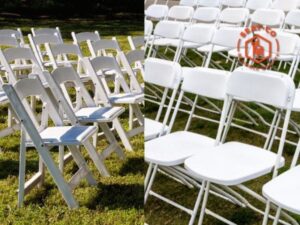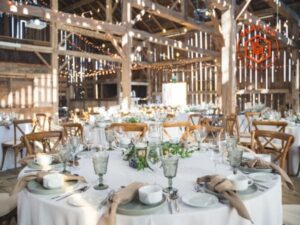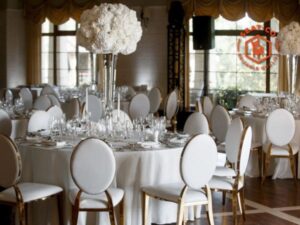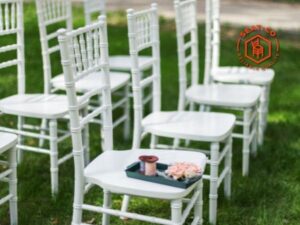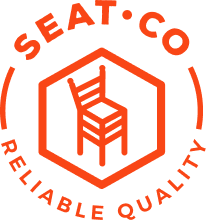Investing Wisely: How Quality Chairs Choices Boost Party Rental Profits
Written by: Marcelo Flores
In the party rental industry, the longevity of your furniture directly impacts your bottom line. Frequent replacements can drain your ROI, but strategic investments in durable pieces can turn the tide. Let’s explore how making the right furniture choices is crucial for your business’s profitability.
Table of Contents
1. The True Cost of Frequent Replacement
2. Is it really normal for me to be replacing my chairs?
3. Short-Term Savings vs. Long-Term Investments
4. The ROI Perspective: Quality Over Quantity
1. The True Cost of Frequent Replacement
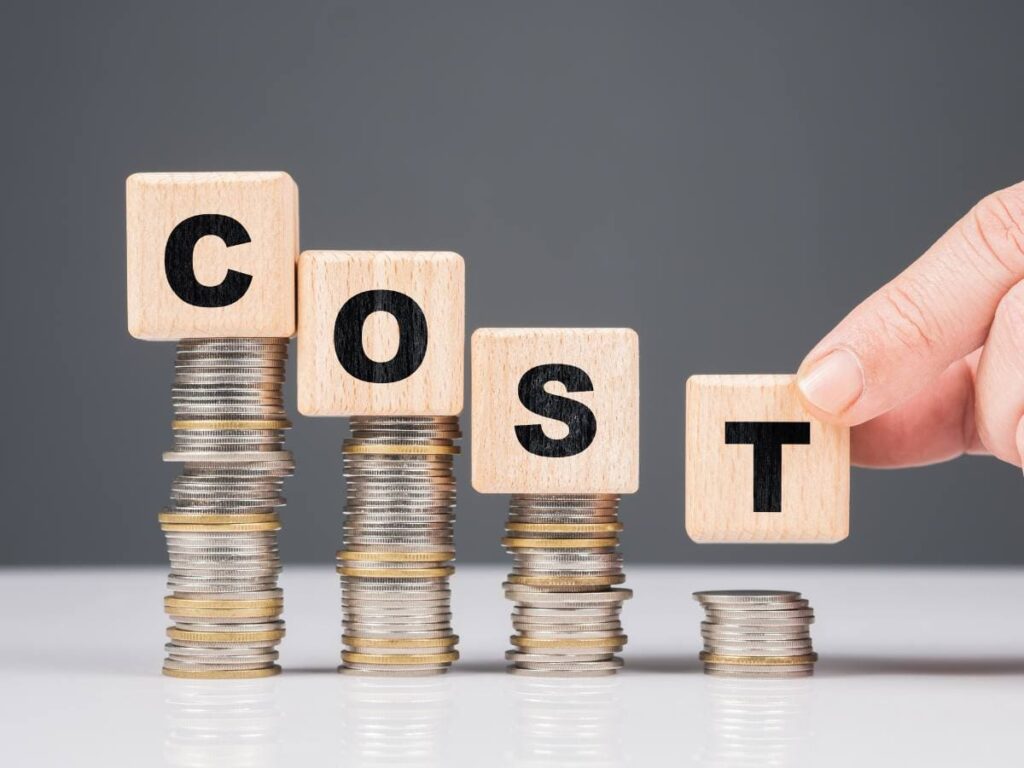
In the party rental industry, frequently replacing furniture like chairs and tables often comes across as an unavoidable business expense. However, beyond the apparent costs of chair replacement, several hidden costs significantly affect your Return on Investment (ROI).
Understanding these costs is crucial for any business owner looking to build a sustainable and profitable operation.
Direct Financial Impact
The most obvious cost of frequent furniture replacement is the direct financial outlay. Each time a piece of furniture is replaced, you not only have to pay for the cost of the new item, but also for the loss of value of the discarded piece. This buy-and-dispose cycle can eventually eat into your profits. The initial savings from buying cheaper, lower quality furniture can be deceptive, as these items often need to be replaced more frequently.
Operational Disruptions
Beyond the direct cost, there are significant operational disruptions. Every time a piece of furniture is replaced, it requires time and resources to source, purchase, and integrate the new item into your inventory. This process can be time-consuming and diverts attention away from other critical business activities. Additionally, inconsistent furniture quality can lead to customer dissatisfaction, impacting your business’s reputation and future earning potential.
Long-Term Financial Implications
The long-term financial implications of frequent replacement are often overlooked. While the immediate cost of cheaper furniture might seem lower, the need for regular replacements means higher expenses over time. This not only affects your current cash flow but also limits your ability to invest in other areas of your business that could drive growth and increase profitability.
Environmental and Brand Image Costs
There’s also an environmental cost to consider. The cycle of buying and disposing of furniture contributes to waste and can harm your brand’s image, especially in today’s eco-conscious market.
Recognizing these costs is the first step in developing a more sustainable and profitable approach to furniture management in your business.
2. Is it Really Normal for me to be Replacing my Chairs?
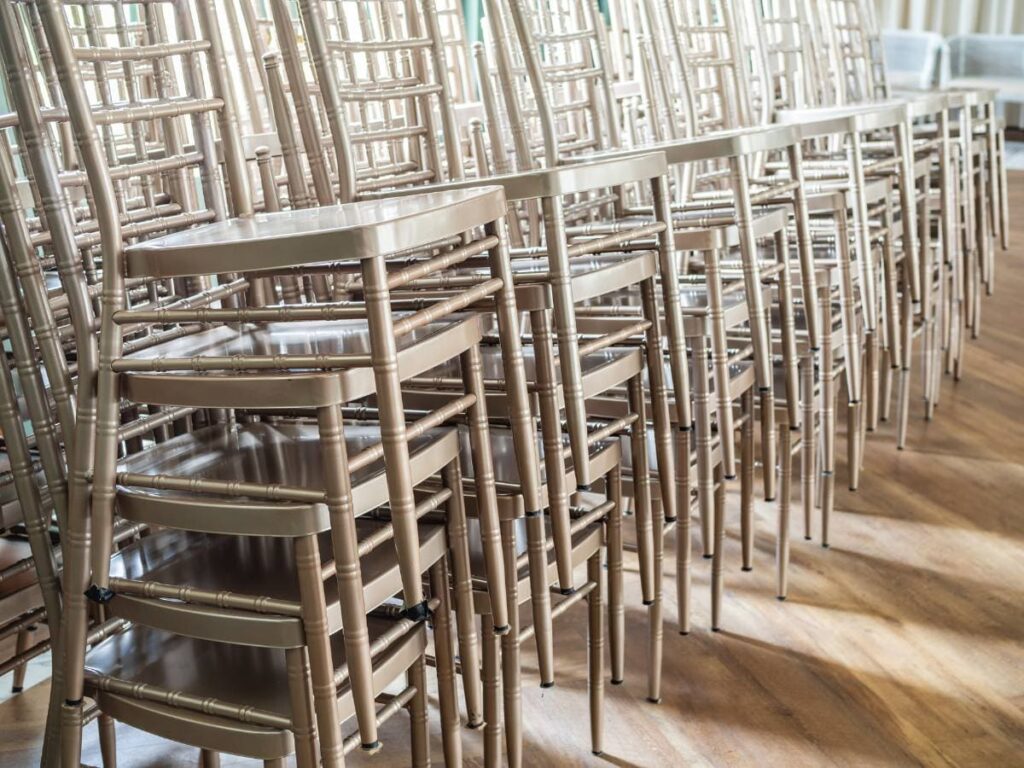
In the party rental industry, frequent furniture replacement has become an accepted norm for many businesses. However, this acceptance raises a critical question: should it be considered normal, or is it a costly misconception that needs reevaluation?
This global trend raises important questions about sustainability, cost-efficiency, and long-term value.
A Global Trend of Disposability
The modern consumer market, influenced heavily by fast-paced production and consumption cycles, often prioritizes immediate gratification and low upfront costs over durability and long-term value. This trend is evident in various sectors, from electronics to fashion, and has significantly influenced business practices worldwide, including the event rental industry.
Rethinking the Norm Across Industries
The acceptance of frequent replacement as a norm is not just an industry-specific issue but a broader societal challenge. It reflects a mindset that overlooks the cumulative financial and environmental costs of constant turnover. In the party rental business, this manifests in the regular purchasing of low-cost, low-durability furniture, leading to a cycle of frequent replacements and increased waste.
The Shift Toward Sustainability and Durability
There is a growing global movement towards sustainability, advocating for a shift in consumption patterns. This movement emphasizes the importance of investing in high-quality, durable products that offer better long-term value and have a lesser environmental impact.
The Financial and Environmental Logic
From a financial perspective, investing in durable furniture makes sound business sense. It reduces the frequency of replacements, thereby lowering long-term operational costs and enhancing ROI.
As manufacturers in the party rental industry, our mission is to challenge the norm of disposability by crafting durable, high-quality furniture that stands the test of time. We are committed to sustainability, aiming to reduce environmental impact and encourage a shift in consumer behavior towards long-lasting products.
3. Short-Term Savings vs. Long-Term Investments
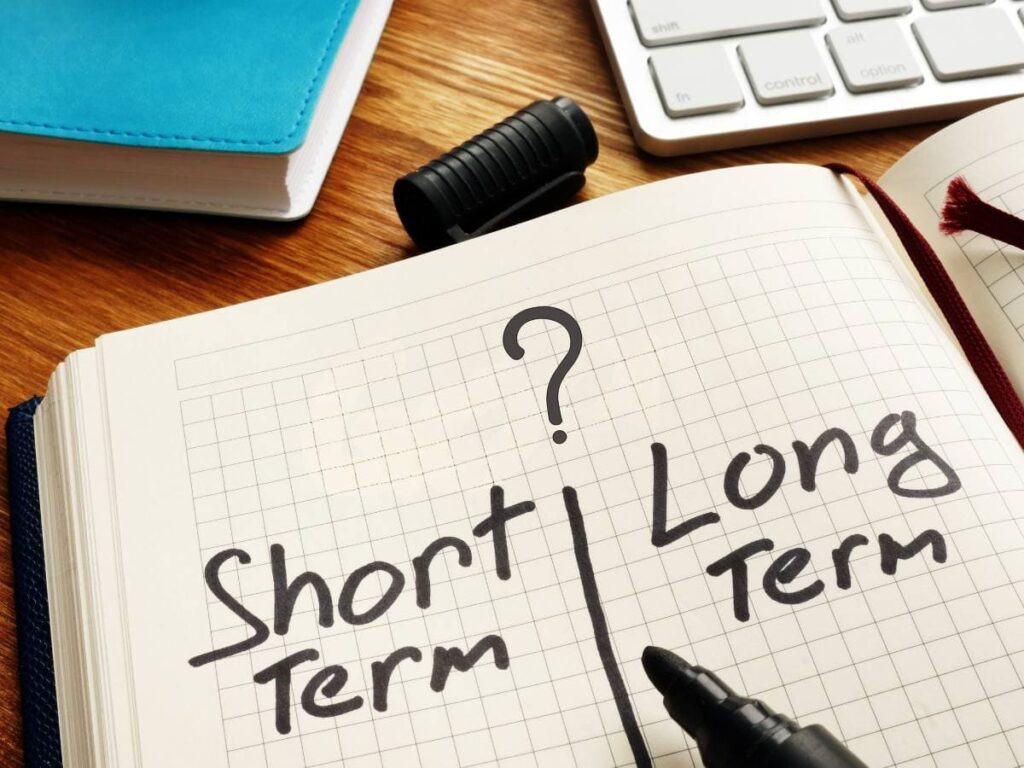
The dilemma between opting for short-term savings and making long-term investments is a critical decision point for party rental businesses. While the allure of immediate cost reduction is tempting, it’s essential to consider the broader implications of such choices on your business’s sustainability and profitability.
The Allure of Immediate Cost Savings
Initially, purchasing cheaper, lower-quality furniture might seem like an economical choice, offering apparent short-term savings. This approach, however, often leads to a cycle of frequent replacements as these items are less likely to withstand the rigors of regular use and transportation. The result is a continuous outflow of capital, which, when added up, can exceed the cost of higher-quality alternatives.
Long-Term Investment Benefits
Investing in higher-quality, more durable furniture represents a long-term strategic decision. While the upfront cost is higher, these pieces last significantly longer, reducing the need for frequent replacements. This not only leads to direct cost savings over time but also ensures operational efficiency and consistency in service quality. High-quality furniture can withstand frequent use, maintaining its aesthetic appeal and functionality, which is crucial for maintaining a positive brand image and customer satisfaction.
The best thing you can do is calculate the expected ROI from each product and choose a supplier that can guarantee quality so you get the most out of each chair.
4. The ROI Perspective: Quality Over Quantity

When evaluating the success and sustainability of a party rental business, the Return on Investment (ROI) is a crucial metric. From an ROI perspective, prioritizing quality over quantity in furniture selection is not just a matter of preference but a strategic business decision that can lead to greater profitability and long-term success.
Understanding ROI in Furniture Investment
ROI in the context of party rental furniture is measured not only by the immediate revenue generated but also by the longevity and maintenance costs of the furniture. High-quality, durable furniture may require a larger initial investment, but it pays off in the long run with fewer replacements and repairs, leading to a better ROI.
The Cost of Frequent Replacement
Frequent replacement of low-quality furniture can significantly diminish ROI. The initial savings from cheaper options are quickly offset by the ongoing costs of maintenance, repair, and eventual replacement. This cycle of continuous expenditure can strain cash flow and divert funds from other growth opportunities.
Discover the true costs of high maintenance and learn more here.
Long-Term Profitability
Durability is a key part of the ROI formula. Although it may seem obvious, if one chair lasts twice as long as another, your ROI will be much higher. This longevity means that the furniture continues to generate revenue over a more extended period.
Client Satisfaction and Repeat Business
Quality furniture not only saves costs but also contributes to client satisfaction. Satisfied clients are more likely to become repeat customers and provide referrals, both of which are critical for business growth. The positive reputation garnered from providing high-quality rentals can also justify premium pricing, further improving ROI.
To finish understanding ROI, what the formula includes and how to implement it in your business read the following article.
Frequent replacement of furniture in the party rental industry is a practice that significantly reduces the return on investment. By shifting the focus from short-term savings to long-term investments in quality, businesses can not only enhance their financial sustainability but also strengthen their reputation in a competitive market.
Replacing your chairs not only reduces your profitability but also impacts your cash flow, increases maintenance costs, and demands more time and resources for purchasing new chairs.
To further explore strategies for building a successful party rental business, don’t miss our eBook.

